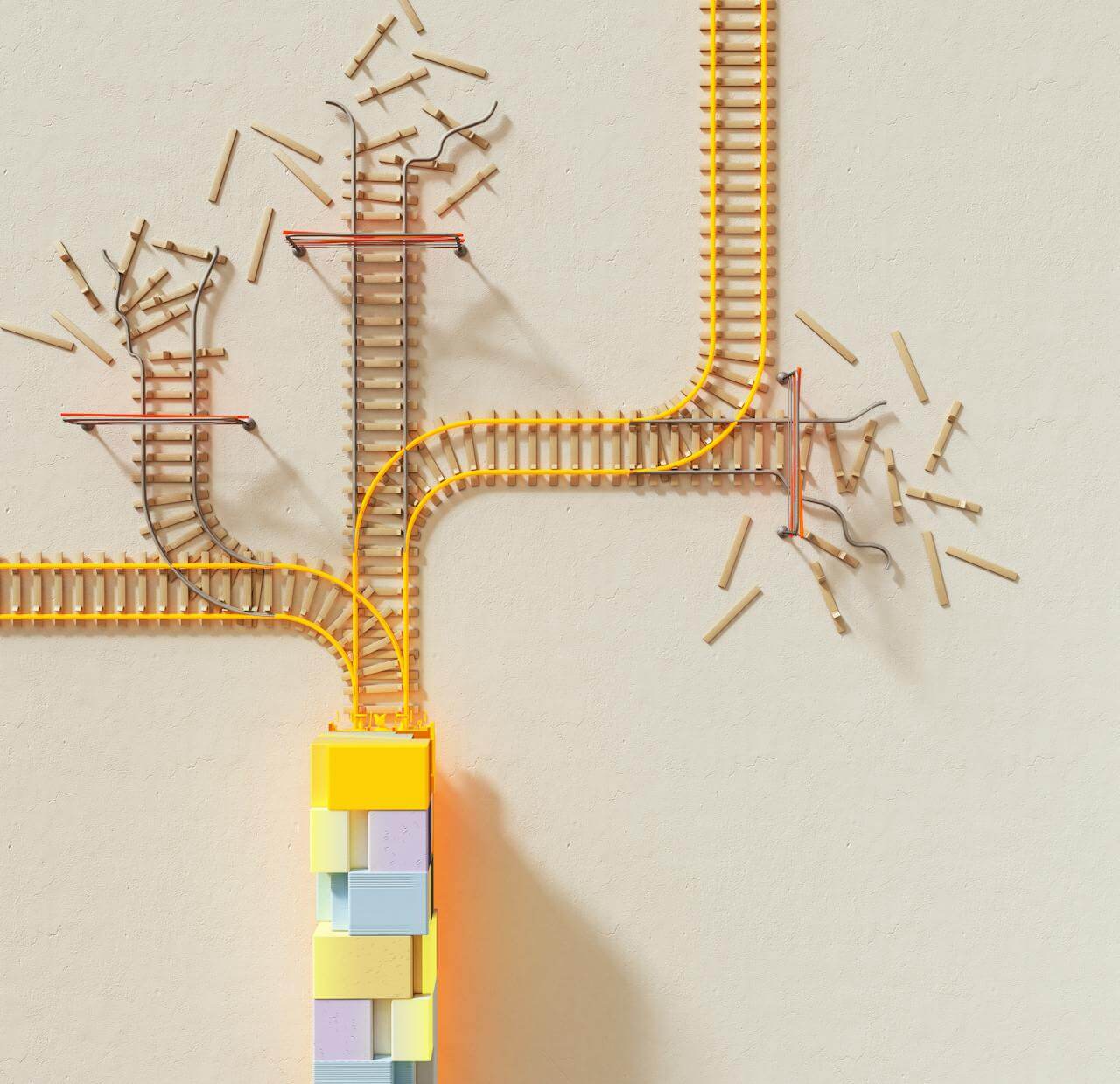The same patterns of attrition described in The Ombudsperson and the war of attrition also define how governments manage harm in military and veterans’ systems. Delays in compensation, endless investigations, and deferrals justified as ‘process’ reveal that administrative time itself functions as an instrument of harm. What appears as prudence operates as quiet abandonment—an institutional strategy that lets harm age into invisibility.
The arithmetic of harm
When our government decides how they will count, and whether they will correlate data points, they decide who matters.
Just a Parent
The bureaucratic obsession with measurement has a dark lineage. During the twentieth century, regimes such as Nazi Germany used census records, racial classifications, and bureaucratic forms to identify, segregate, and ultimately exterminate millions. Data collection was not incidental to that machinery of atrocity—it was its foundation.
The same logic of administrative abstraction that allowed genocide to proceed under the cover of paperwork persists, in muted form, across modern institutions. Numbers permit cruelty to appear rational. Spreadsheets become instruments of distance, enabling officials to believe they are managing systems rather than destroying lives. Our pain becomes a data point, not a point for redress.
“The concerns you reported and information you provided about your experience will be included in our office’s review, which I anticipate will help other families navigating the school system in future, and an anonymized version of your complaint will form part of our annual report for consideration by the legislature.”
BC Ombudsperson
Ombudsperson Officer
In both the military and education systems, the state tracks harm with a precision that hides responsibility. Military bureaucracies record injuries and compensation claims through systems designed to manage liability. Veterans Affairs Canada has allowed thousands of disability claims to lapse due to procedural delays that stretch for years. This is not inefficiency; it is administrative triage. Every day that passes without resolution reduces the number of claimants who survive to receive justice. Disability benefits processing – summary report
In education, the same logic governs the data dashboards that promise transparency while producing opacity. The Ministry of Education counts absences, incidents, and appeals but refuses to connect them to disability and exclusion data that would expose structural discrimination. Students who have withdrawn are classified as unenrolled, not as casualties of systemic neglect. My son remains officially enrolled though he has not attended school since March—a bureaucratic fiction that erases the reality of exclusion (Scarry, The Body in Pain, 1985, Yale excerpt).
-
Too afraid to see: why the BC government doesn’t track exclusion
Data is the scaffolding of democratic accountability. Without shared facts, policy becomes theatre and…
-
Counting crisis: data, distrust, and the false choice between safety and inclusion
Across British Columbia, the launch of Surrey DPAC’s Room Clear Tracker has ignited a…
The afterlife of complaint
The longer they took to respond, the more the harm became normal. By the time they answered, they used our survival as a reason to deny support and the school year was gone.
Just a Parent
When harm enters the record, it is transformed into delay. Veterans die waiting for compensation; families in British Columbia spend years inside the complaint system only to be told their grievances are out of time. And the harm is slow and grinding and cumulative. These delays are policy decisions disguised as process. Each expired deadline converts a moral obligation into an administrative closure. The Ombudsperson and Teacher Regulation Branch justify inaction through rules that reward institutions for surviving long enough to escape scrutiny. Their letters acknowledge suffering, affirm the integrity of procedure, and cite the passage of time as exoneration (Berlant, “Slow Death,” CUNY Commons, 2010).
Sara Ahmed describes this pattern as institutional redirection: the complaint itself becomes the object of care rather than the harm that provoked it. Bureaucracies stage empathy to preserve power. Each investigation that begins in urgency and ends in attrition becomes another instance of what Ahmed calls non-performative speech—justice promised precisely to prevent justice enacted (Ahmed, Complaint!, 2021).
-
Institutional responses to complaint
I have been reading Sara Ahmed’s Complaint! and it almost feels as though I have been working backwards. I wish I had the insights in this book before my children entered kindergarten. Perhaps, I would have been spared years of confusion, exhaustion, and grief, and perhaps my children would have been spared some of the deepest harms […]
The bureaucracy of care
The machinery of education mirrors the structure Ahmed exposes. Teachers log incidents into electronic platforms that archive distress but provide no remedy. Parents build private archives of unanswered emails. District officials produce compliance reports that record that action occurred, not that change happened. The documentation of harm replaces its resolution. Achille Mbembe calls this logic necropolitical: a form of governance that decides who endures and who disappears (Mbembe, Necropolitics, 2019). Ahmed’s analysis of affective economies shows how the language of care circulates to protect institutions from accountability. Empathy is extracted from those harmed to sustain the legitimacy of the systems that harm them (Ahmed, The Cultural Politics of Emotion, 2004).
Her concept of procedural fatalism—the sense that “nothing much will happen”—clarifies the psychic violence of this process. The endless repetition of civility, apology, and deference disciplines complainants into exhaustion. The institution’s positivity duty demands gratitude for acknowledgment rather than repair. The harm thus migrates: from a child’s exclusion to a parent’s body, which carries the stress, insomnia, and despair of documentation that never ends.
-
Epistemic silencing of disabled children’s primary caregivers
Epistemic silencing in BC schools discredits mothers’ knowledge, reframes advocacy as aggression, and erases disabled children’s pain, leaving families punished for truth.
Erasure through accountability
Administrative time is the province’s most efficient weapon. These systems are designed to exhaust! Oversight bodies defer action until evidence ages into irrelevance. Ministries issue metrics that measure process but exclude outcome. Veterans’ Affairs Canada celebrates clearance rates while claimants die in queue; the Ministry of Education boasts attendance rates while children vanish from classrooms. This conversion of absence into data is moral laundering. Catherine Lutz’s work on casualty reporting in war shows how statistics convert death into governance (Lutz, The Asia-Pacific Journal, 2008). Educational accountability performs the same trick. Restraint, isolation, and attrition are scrubbed from official reports, allowing leaders to claim moral victory through bureaucratic precision.
Ahmed argues that institutional speech acts—diversity pledges, fairness reviews, inclusion audits—function as blockages. These gestures circulate as evidence of virtue, not as tools of change. The Ombudsperson’s letters and Ministry reports are case studies in this moral inversion. Their polished language performs care to neutralise outrage, converting testimony into data and suffering into evidence of the institution’s own sensitivity.
Toward an ethics of witnessing
To heal, we have to start from truth. Someone will have to finally admit was was done to our children and our families in the name of optics and mitigating liability.
Just a Parent
Repair begins when we treat delay as violence rather than administration. Each postponed investigation, each unanswered email, each deferred review extends the harm it claims to address. True accountability requires an immediate response to injury and compensation for impact, not a decade of correspondence.
Ahmed insists that complaints are archives of knowledge, not inconveniences. They reveal the design of harm. To read them seriously is to confront the provinces’s moral architecture. Elaine Scarry wrote that justice depends on the capacity to imagine another’s pain (Scarry, The Body in Pain, 1985). Ahmed extends that argument: institutions have trained themselves to feel for themselves, not for the harmed. They redirect compassion inward, where it becomes maintenance rather than ethics. A government committed to justice would treat every delay, every omission, every uncounted absence as a violation of duty. Ours has instead perfected bureaucratic cruelty: the art of appearing gentle while producing devastation.
Key takeaways for readers
- Data hides responsibility. The province records harm—injuries, absences, complaints—but uses those numbers to protect itself, not to deliver justice.
- Delay is a policy choice. Long timelines, expired deadlines, and paused investigations are deliberate tools for denying accountability.
- Bureaucratic empathy is performance. Institutions express care through polished letters and polite meetings that replace action with appearance.
- Complaint becomes labour. Families and veterans expend years documenting harm while institutions cite procedure as progress.
- Administrative time erases harm. The slow pace of process ensures that claims expire, children age out, and evidence loses relevance.
- Empathy is redirected inward. Bureaucracies reserve compassion for themselves, portraying endurance and civility as moral virtue.
- Procedural fatalism is systemic. Complainants are conditioned to expect nothing will change, normalising despair as professionalism.
- Accountability becomes moral laundering. The language of fairness and inclusion is used to disguise institutional self-protection.
- Complaints are archives of truth. They show how power operates—revealing the structure of neglect, not isolated errors.
- Justice requires urgency. Repair means recognising delay as violence and treating every uncounted injury as a moral and civic failure of the province
Remembrance as reckoning
Every Remembrance Day, Canada pauses to honour those who suffered in war. Yet we rarely extend that moral attention to those harmed by the same rhetoric in peacetime. The same bureaucratic cultures that made twentieth-century atrocities possible—record-keeping, rationalisation, delay—still structure our systems of care. If remembrance means anything, it must include accountability for administrative cruelty. The ledger of harm must be read aloud, not stored. To remember truthfully is to see that the victims of neglect and delay are casualties of the same moral architecture that once counted bodies to justify power. Real remembrance demands that we refuse the comfort of procedure and confront the human cost of bureaucracy itself.










